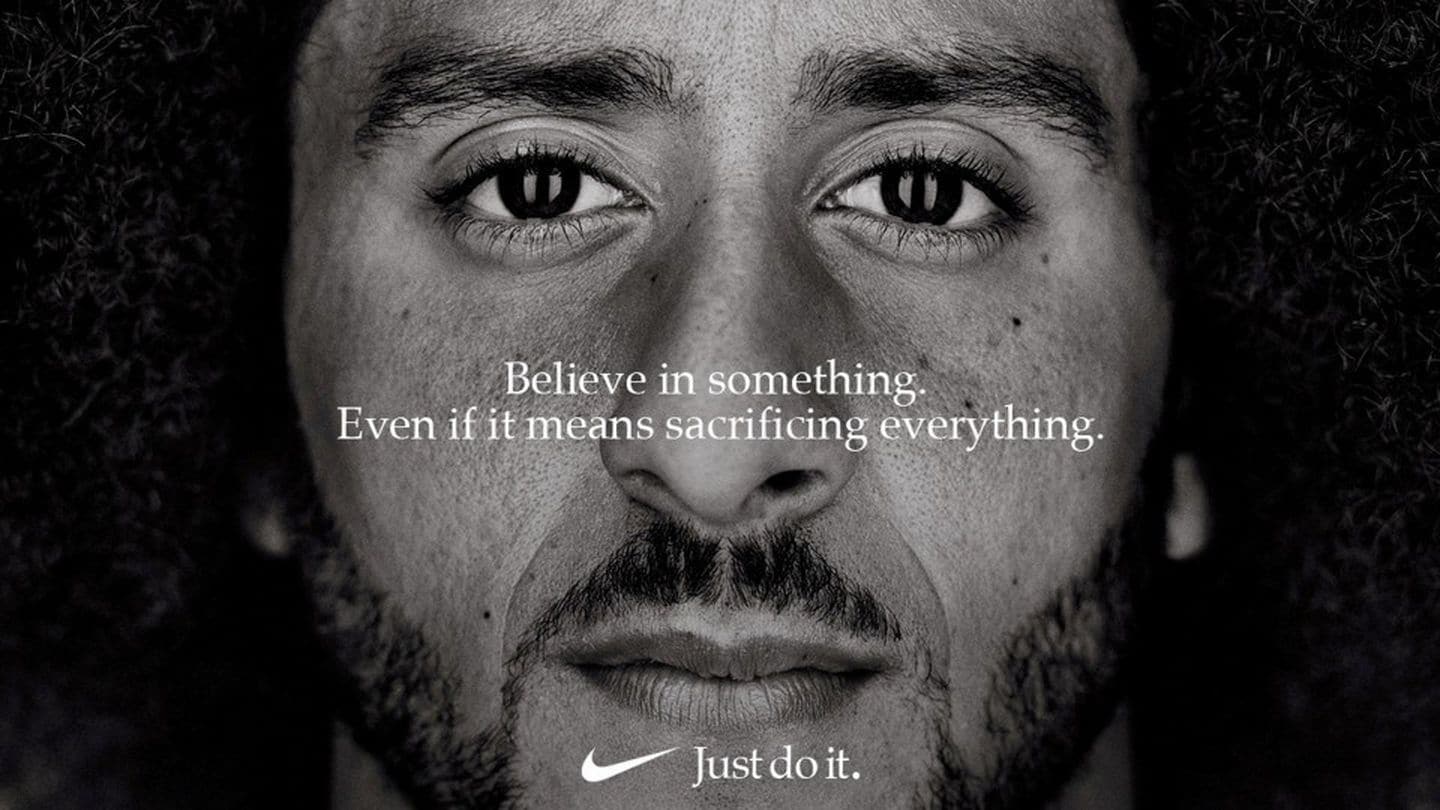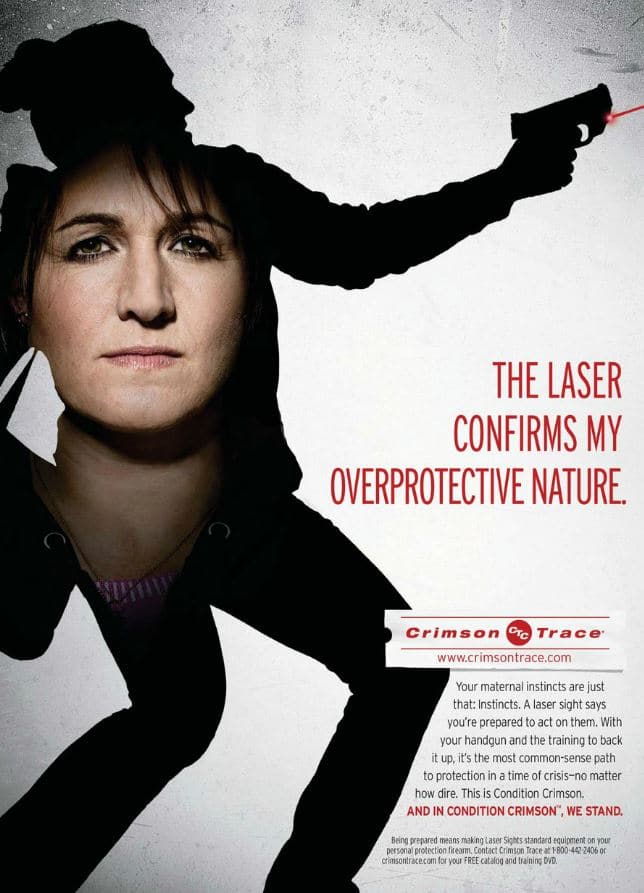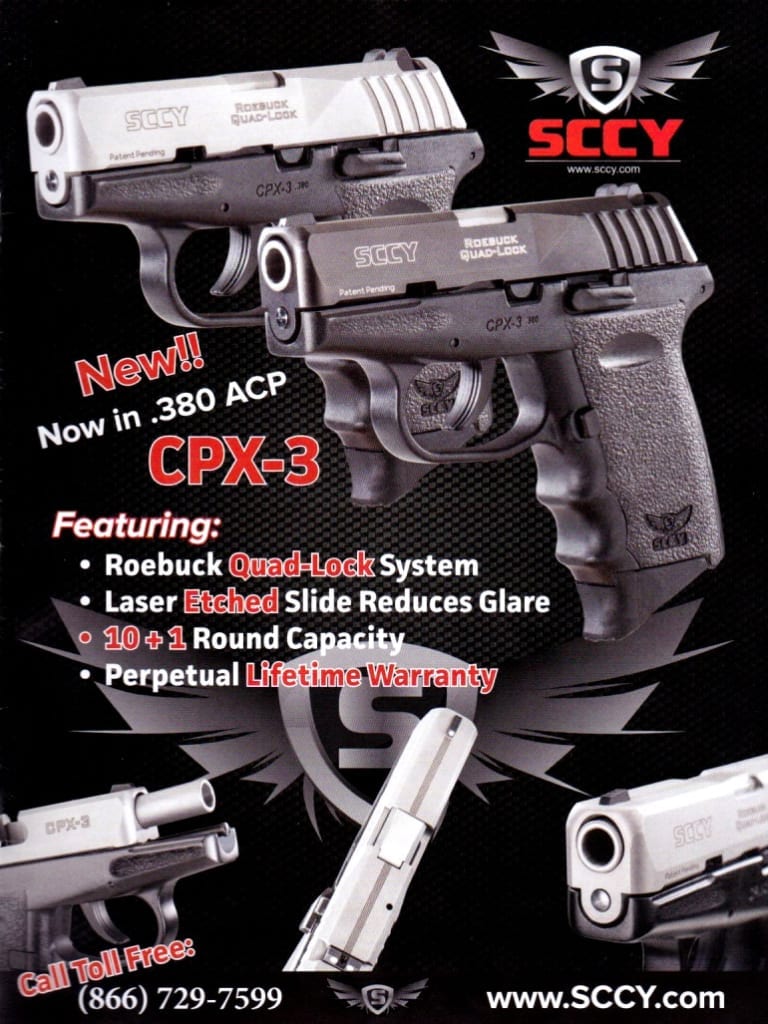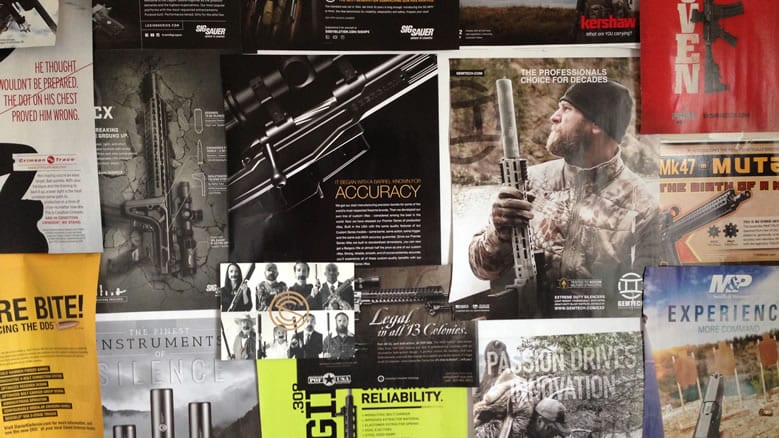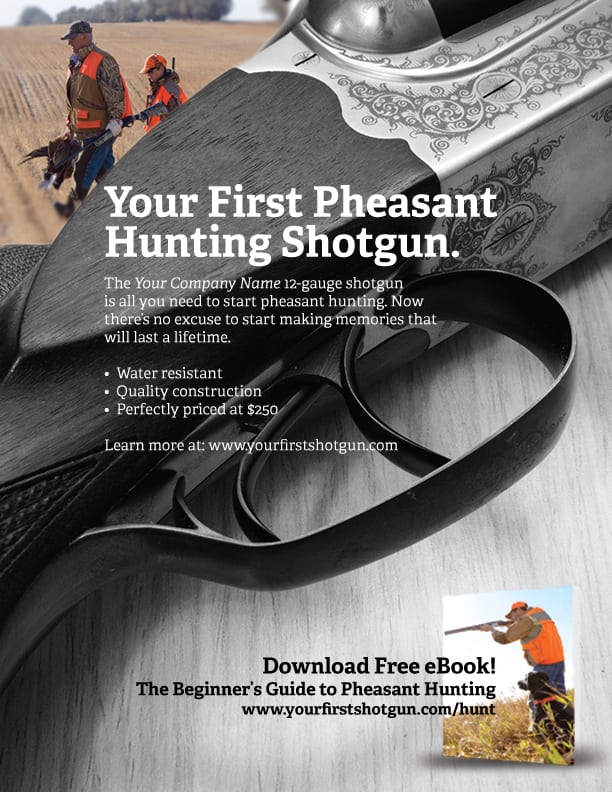
The onslaught against the firearms industry has never in history been more fervent. Lawsuits are emerging at a disconcerting rate across the U.S., and as a marketer in the firearms industry tasked with advising clients on marketing advice I had to ask the question:
What is the future of advertising in the firearms industry?
In this article, I want to share five thoughts that will help you—the firearm marketer or business owner—think through your future advertising efforts to help you navigate and defend against the onslaught of our adversaries’ misunderstanding and the litigious efforts to destroy our industry and the good people in it.
1. What makes advertising effective?
Any piece of advertising (print, tv, radio, digital or otherwise) attempts to let others know about how a product or service can help them survive or thrive. If you are advertising a shoe’s new cushioning system that softens your foot strike or a pillow that enables you to sleep better, copywriters will typically use the following framework:
- Identify the customers’ problem
- Offer your product as the solution
- Show how your product solves the problem
- Show empathy and authority (why they should listen to you)
- Explain the consequences and successes of using your product
- Call them to action: Buy Now, Subscribe or Sign up
The above framework can be identified in almost every effective advertisement in the world. And yes, it does work when done correctly. Next time the MyPillow commercial on T.V. interrupts you, see if you can follow the above narrative.
Advertising a firearm is no different than advertising a Toyota, Dr. Pepper, iPhone, or a pair of Nikes. Advertising seeks to inform potential buyers of a product’s functions and features that moves a buyer towards purchasing your product. By aligning your product’s brand attributes with that buyer’s worldview, you increase the odds of the purchase. We call this the customer transformation. Include an eye-catching image, a call to action along with a sizable media buy, and you’ve got the makings of an effective campaign.
2. But now we’re at risk.
If you’re a firearm brand that places an ad and your product is used in a shooting—even though the Protection of Lawful Commerce in Arms Act protects you—you could become the target of a potential lawsuit.
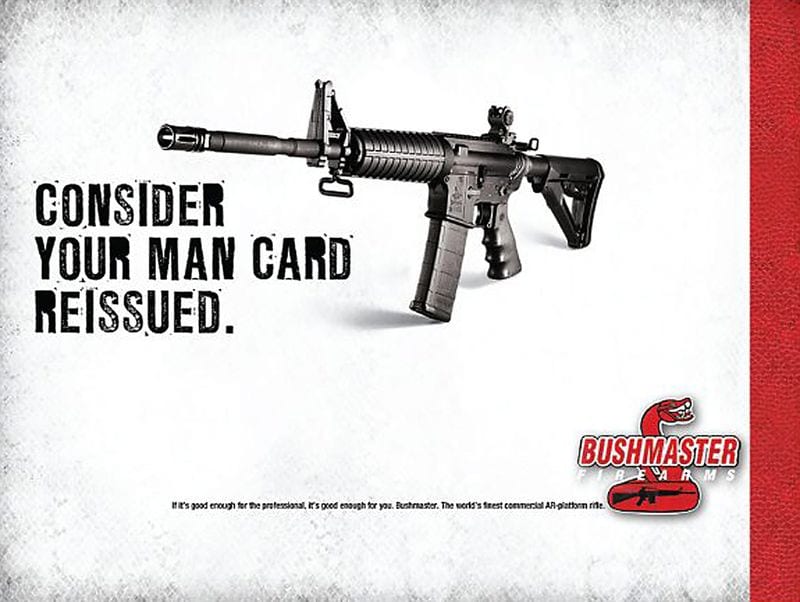
Photo credit: Remington
The Bushmaster ad being used against Remington Outdoor Co. in the Newtown shootings is now waiting to be heard by the U.S. Supreme Court. If the Supreme Court sides with the plaintiffs and allows the case to proceed, the case would go back to the Connecticut State Supreme Court to determine the merits. That could give the plaintiffs access to Remington’s internal marketing documents during the discovery process. (Source: WSJ)
UPDATE: November 15, 2019
U.S. Supreme Court denied Remington’s petition for review of the state supreme court decision. This means the plaintiffs may be able to gain access to Remington’s marketing materials through the Connecticut court.
According to Joshua Koskoff, a lawyer for the plaintiffs, “the families lawsuit is intended to shed light on Remington’s calculated and profit-driven strategy to expand the AR-15 market and court high-risk users, all at the expense American’s safety.”
A ruling in favor of the plaintiffs will adversely affect the firearms industry and potentially set a precedence and open up every other industry to litigation. For example, if your tire falls off while you’re speeding and kills five people, those families could sue the tire company because the tire company’s ad told you that you were the kind of driver who likes to drive fast.
That’s why you need to understand how to protect your company’s brand from these frivolous lawsuits.
Take action
ATTEND THIS WEBINAR: Marketing Practices Liability in the Firearms Industry
Orchid Advisors and Williams Mullen are sponsoring a Free Webinar Tuesday, November 12, 2019 at 2:00 EST
Register by filling out the form on Orchid’s contact page and select “Webinar” under “I’d like to learn more about.”
Topics will include
-
- A review of the PLCAA, the Connecticut case, and the theory of potential liability.
- The severity of risk should an industry member get sued for criminal misuse of products.
- Best practices for monitoring and policing marketing strategies.
- Additional steps industry members should take to reduce risk.

3. Virtue signaling
More and more companies whose CEOs worldview align with anti-gun sentiment and those who disagree with certain products and political positions are steering their ships in the direction of what is called “virtue signaling.”
Virtue signaling looks like this:
- I don’t like your product
- Not liking your product can help strengthen my brand
- We should come out publicly against your product
- Taking a position against your product will ‘hopefully’ breath new life into my diminishing brand
We’ve seen this with Dick’s Sporting Goods and WalMart. You also might recall the Nike ad that featured Colin Kapernick as a way to strengthen Nike’s brand with its’ urban audience.
Shopify removed firearm dealers and manufacturers from using its platform last year. Due to the pressure of financial institutions and gun control groups, we can expect more virtue signaling in the years to come.
Take action
Manufacturers and dealers need to create open-source websites and avoid getting caught up in virtue signaling platforms and software companies who are against firearms. i.e. SalesForce. Make sure you know where your intended solution provider stands on the 2nd Amendment.
4. Social media and the ensuing increase in gun ownership
Facebook, Google, YouTube and Instagram make no secret that they are against the firearms industry. The latest bans and advertising restrictions implemented by the largest social media networks make it very difficult for the firearms industry to advertise their products—and from experience seem to be getting worse.
These restrictions are just another way they are shaming the firearms industry out of the public square of debate. However, this isn’t about debate anymore—this is blatant censorship. As customer behavior changes, firearm brands need to look for other strategies to help grow their businesses.
Word-of-mouth (WOM) marketing programs, though once hard to instigate, can now be developed at scale without the use of certain software platforms. Mark Schaefer, a marketing expert and author who spoke at this year’s NSSF CMO summit about the coming “Marketing Rebellion,” talks a lot about people not wanting to be sold—but to be helped because advertising is losing its effectiveness. I tend to agree with him if you’re trying to market toothpaste or car insurance—but not firearms, which is an enthusiast and hobby sport. As a law-abiding gun enthusiast, I enjoy looking at ads in Guns and Ammo and so do other law-abiding gun enthusiasts.
As violent crime rates increase and would-be presidential contenders like Francis Beto O’Rourke and others tout gun confiscation, people will—by instinct—seek ways to defend themselves. This is one of the reasons the women segment is outpacing any other segment in the industry. They will make their decisions on what their friends and family recommend and only use Facebook and Google to reinforce their intended purchase, which I believe contributes minimally to the buyers’ lifecycle when it comes to purchasing firearms. Last month’s record setting background checks underscores this trend.
Take action
Brands building social media groups and followers on third-party platforms are at risk of losing precious marketing capital. Utilize multiple social media platforms as well as pro-gun and pro-hunting platforms like Powderhook and GoWild. Build great products, utilize your email marketing, SEO/voice and bolster your customer service programs to build word-of-mouth.
5. God, America, Guns, Masculinity, and Trump
Another front on our industry is how advertising restrictions are tied to the #metoo movement, masculinity, and those who support President Trump. Every marketer knows that riding trends can help push a brand message further. Gun industry opponents are utilizing the current culture war to amplify their messages. This is why you see a united attack on Christians, law enforcement, guns, hunters, men, and President Trump. The opposition makes no effort to hide it.
It will be up to marketing professionals to communicate a message of respect, strength, resolve and defense along with our product’s innovations that stands resolute in the face of these blatant attacks and censorship.
Take action
Review your advertising with firearm legal professionals to mitigate the risks of your advertising.
So, what is the future of firearm advertising?
Regardless of the outcome of the Remington case—firearm advertising, which once required little to no legal involvement will now pressure prudent marketers to add a legal review in their timelines. Some won’t comply, and that is their right. However, with the culture war reaching new heights, fake news, the division in our country getting deeper, and the disregard of the United States Constitution—it’s better to be safe than sorry.
What are your thoughts on the future of firearm advertising? Please comment below.




